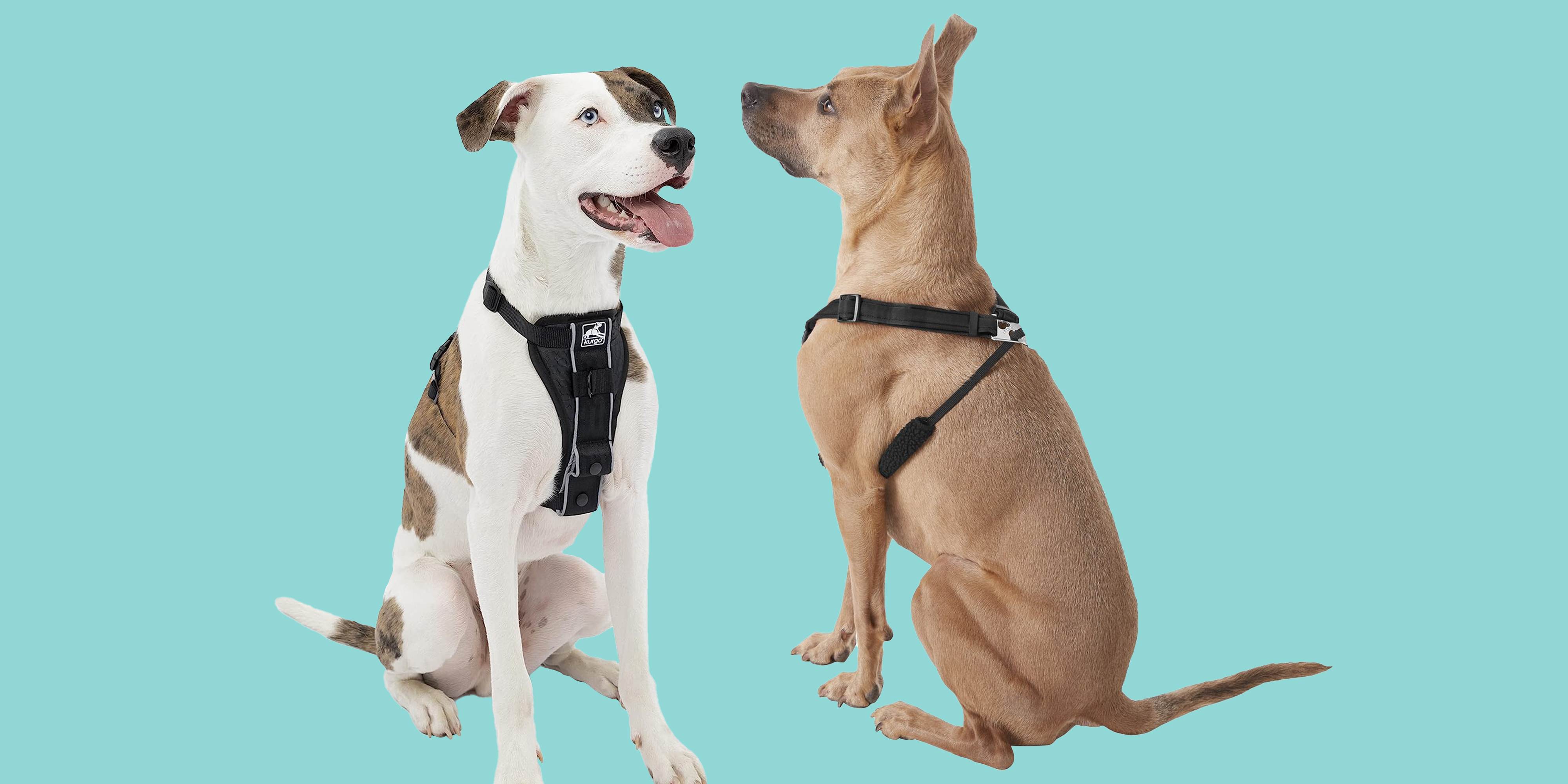To stop a dog from pulling on the leash, stop and call them towards you if they pull to get towards something they want, such as a toy. This teaches them that pulling slows things down and walking on a loose leash is rewarding.

Credit: medium.com
Understanding Why Dogs Pull On The Leash
Learn how to stop a dog from pulling on the leash by understanding why they do it. Instead of allowing frustration to build, try training techniques such as directional changes, lead pressure, and engagement to teach your dog to walk nicely on a loose leash.
The Problem With Short Leashes
Many dog owners believe that a short leash is the best way to maintain control over their furry friends. However, this can actually exacerbate the problem of pulling on the leash. When a dog is on a short leash, they are restricted in their movement and may feel frustrated or restrained.
A short leash also limits the dog’s ability to explore and release pent-up energy, leading to even more pulling. Additionally, the tension on a short leash can cause discomfort for the dog, making them more inclined to pull in an attempt to alleviate the pressure.
Dogs are natural explorers and curious creatures. When they are outside on a walk, they are stimulated by their surroundings and want to investigate everything they see, smell, and hear. This natural instinct to explore can cause dogs to pull on the leash in an attempt to reach what catches their interest.
Sometimes, dogs pull because they are excited or anxious. They may be eager to reach other dogs, wildlife, or even just interesting smells. Dogs may also pull if they are not well-trained or if they have not been taught proper leash manners. Without consistent training, leash pulling can become a learned behavior that is difficult to break.
Common Misconceptions About Leash Training
Many dog owners hold misconceptions about leash training that can hinder their progress in stopping their dog’s pulling behavior. One common misconception is that using a prong collar or choke chain will solve the problem. However, these tools can cause pain and discomfort to the dog, leading to further behavioral issues.
Another misconception is that harsh corrections or punishment will teach the dog not to pull. In reality, this can create fear and anxiety in the dog, making them more likely to exhibit erratic behavior and further pulling on the leash.
Instead, it is important to focus on positive reinforcement training methods that reward the dog for desired behavior. This can include treats, praise, and play rewards to reinforce good leash manners. Consistency and patience are key when it comes to leash training, as it is a gradual process that requires time and effort from the dog owner.
In conclusion, understanding why dogs pull on the leash is crucial to finding effective solutions. By recognizing the problem with short leashes, acknowledging the reasons behind a dog’s pulling behavior, and dispelling common misconceptions, dog owners can take the necessary steps to stop their furry companions from pulling on the leash and have more enjoyable walks together.

Credit: www.goodhousekeeping.com
Techniques And Strategies To Stop A Dog From Pulling
Discover effective techniques and strategies to stop your dog from pulling on the leash. Learn how to use the right equipment, pay attention to tension, turn away from distractions, and more. Say goodbye to leash pulling and enjoy peaceful walks with your furry friend.
When it comes to walking your dog, dealing with excessive pulling can make the experience frustrating and exhausting. Fortunately, there are several techniques and strategies that you can employ to stop your dog from pulling on the leash. By choosing the right equipment, using directional changes, applying lead pressure, and utilizing engagement and free shaping, you can regain control of your walks and enjoy a more peaceful and enjoyable experience with your furry friend.
Choosing The Right Equipment
One of the first steps in stopping your dog from pulling is to ensure that you have the right equipment. A properly fitted harness or collar that provides control without causing discomfort is essential. Avoid using choke chains or prong collars, as these can cause harm to your dog and may lead to further pulling. Consider using a front-clip harness or a head halter, which can give you better control over your dog’s movements.
Using Directional Changes
Directional changes can be an effective way to discourage your dog from pulling on the leash. When your dog starts to pull, abruptly change direction, causing your dog to follow you. Repeat this process each time your dog pulls, teaching them that pulling will result in changes in direction. Remember to reward your dog with treats and praise when they walk calmly without pulling.
Applying Lead Pressure
Another technique to stop your dog from pulling is applying lead pressure. If your dog starts to pull, stop walking and give a gentle tug on the leash. This applies pressure, signaling to your dog to stop pulling. Once your dog relaxes the tension on the leash and returns to your side, resume walking. Consistency is key with this technique, as it reinforces the idea that pulling does not lead to forward movement.
Utilizing Engagement And Free Shaping
Engagement and free shaping can be powerful tools in stopping your dog from pulling. Engage your dog’s attention by using cues, treats, or toys to redirect their focus from pulling to walking calmly by your side. Free shaping involves rewarding your dog for making the right choices, such as walking without pulling. Use treats and praise to reinforce your dog’s good behavior, gradually shaping their walking habits.
Remember, stopping your dog from pulling on the leash takes time and patience. Consistency in applying these techniques and reinforcing positive behavior will help your dog learn to walk calmly by your side. Enjoy the journey of training your dog and creating a stronger bond while enjoying stress-free walks together.
Troubleshooting And Tips For Difficult Cases
When it comes to leash training, every dog is unique, and some may pose more challenges than others. If you’ve tried various techniques to stop your dog from pulling on the leash but nothing seems to be working, don’t lose hope. There are still options to explore and tips to try that may help address difficult cases. In this section, we will discuss troubleshooting methods and provide useful tips to tackle common leash pulling issues.
When Nothing Seems To Work
If you feel like you’ve exhausted all your training efforts without success, it’s important not to give up. Keep in mind that every dog is different, and it may take longer for some to master leash manners. Here are a few additional strategies that may help:
- Get to the root: Understand why your dog is pulling on the leash. Is it due to excitement, fear, or a desire to explore? By identifying the underlying cause, you can tailor your training approach to address the specific issue.
- Change the equipment: Some dogs respond better to different types of leashes and collars. Consider using a front-clip harness or a no-pull head halter to discourage pulling. Experiment with different options to find what works best for your dog.
- Stay consistent: Consistency is key when it comes to training. Set clear expectations and reinforce positive behaviors consistently. Avoid sending mixed signals, as this can confuse your furry friend.
Using Slip Leads
Slip leads can be a helpful tool to manage leash pulling, especially for dogs who are particularly strong or resistant to other training methods. A slip lead is designed to tighten around the dog’s neck when they pull, creating a physical reminder to discourage pulling. However, it’s important to use slip leads safely and responsibly. Here are a few tips:
- Select the right size: Ensure that the slip lead fits your dog properly. It should be snug enough to stay in place but not too tight to cause discomfort.
- Proper technique: Learn how to correctly put on and use the slip lead. It’s recommended to consult with a professional trainer or watch instructional videos to ensure you are using it correctly.
- Gradual introduction: Introduce the slip lead gradually to avoid causing stress or negative associations. Start by using it for short periods during walks and gradually increase the duration as your dog becomes more comfortable.
The Power Of Eye Contact
Establishing and maintaining eye contact with your dog can be a powerful technique in leash training. Dogs naturally seek visual cues from their owners, and eye contact helps foster a connection and reinforces your position as the leader. Here’s how you can use eye contact to discourage pulling:
- During walks, periodically make eye contact with your dog and praise them for maintaining a loose leash. This positive reinforcement helps them associate eye contact with good behavior.
- If your dog starts to pull, calmly and assertively call their name and make eye contact. This interrupts their focus on pulling and redirects their attention back to you.
- Practice eye contact exercises at home before going on walks. Use treats or toys to reward your dog for making and maintaining eye contact with you.
Seeking Professional Training Help
If you’ve tried different techniques and tips but still struggle with leash pulling, it may be beneficial to seek professional training help. A professional dog trainer or behaviorist can assess your dog’s unique needs and provide personalized guidance and support. They may use specialized training methods or tools to address the specific challenges you are facing. Remember, there’s no shame in asking for help, as it can make a significant difference in your dog’s behavior and your overall walking experience.

Credit: www.barclondon.com
Frequently Asked Questions Of How To Stop A Dog From Pulling On The Leash
What Is The #1 Trick To Stop Your Dog Pulling On The Leash?
The #1 trick to stop your dog pulling on the leash is to stop and call them towards you when they pull. Reward them with something they want when they walk on a loose leash. This teaches them that pulling slows things down.
How Do I Train My Dog Not To Pull On The Leash?
To train your dog not to pull on the leash, place something they want on the floor and call them towards you when they try to pull. Reward them with the item when they walk calmly. This teaches them that pulling slows things down.
How Do I Stop My Leash From Pulling In 5 Minutes?
To stop your leash from pulling, try the following steps: 1. Place an enticing object on the floor and call your dog towards you when they try to pull towards it. 2. Reward your dog for walking on a loose leash by allowing them to reach the object.
3. Use the command “Yes!” And reward your dog whenever there is slack in the leash. 4. Be patient and consistent with this training method. 5. Avoid starting any sentences with specific phrases or using passive voice.
What Is The Command For A Dog To Stop Pulling?
To stop a dog from pulling on the leash, place something tempting on the ground like a toy. If the dog pulls towards it, stop and call them towards you. Reward them for walking on a loose leash by allowing them to reach the toy.
This teaches the dog that pulling slows things down.
Conclusion
To stop your dog from pulling on the leash, make sure to use the right equipment and pay attention to the tension. Turning away from distractions and incorporating the most important tip can also be helpful. Remember, don’t fall for the leash training lie.
Instead, try techniques like directional changes and applying lead pressure. Training your dog to walk nicely on a leash requires consistency and patience. By following these steps, you can have enjoyable walks without the pulling.



